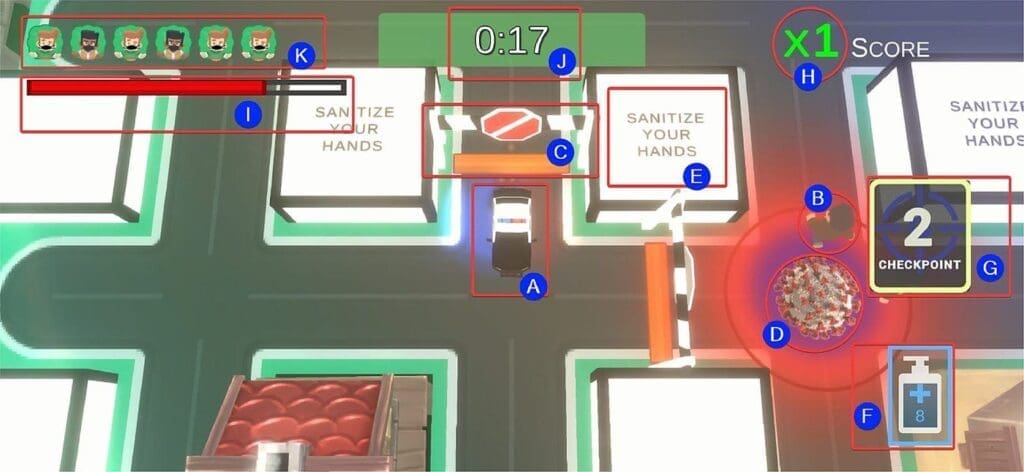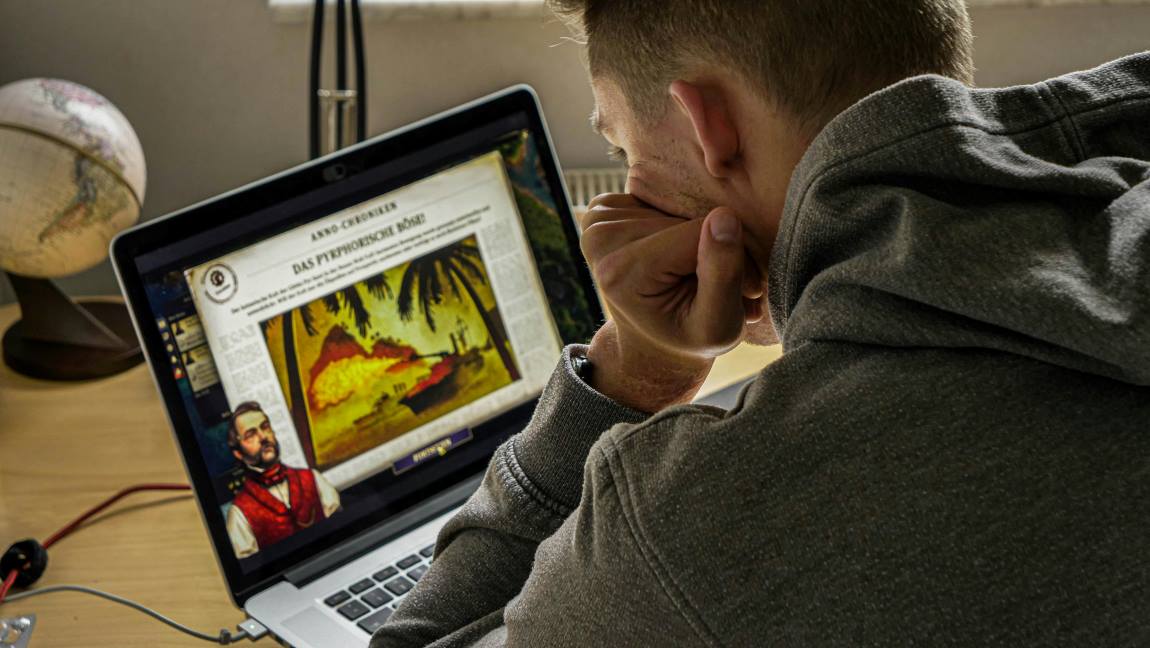Nishtha Phutela | BML Munjal University in Haryana – By using an engaging format and features such as a scoreboard and rewards, games can help raise awareness of an issue or disease.
Gaming has grown up.
Players are learning about climate change, hurricane safety, type 1 diabetes and infection control practices during a pandemic.
And they are having fun while doing so.
Serious games — so-called because they are designed for purposes beyond pure entertainment — are being used for several purposes.
These include encouraging people to adopt healthy lifestyle changes, develop better social skills, be persuaded and recruited to various causes, and for campaigning in politics. Such games can also be used to teach medical students how to diagnose certain conditions.
Many serious games have been developed for diseases such as cancer, diabetes, Alzheimer’s, autism and obesity.
For example, a modified version of the Mario brothers’ computer game helps children learn about type 1 diabetes and how to better control their blood sugar levels.
The game challenges players to manage Mario’s blood sugar levels by ensuring he makes healthy dietary choices and gets enough physical activity.
Such games score over social media platforms as tools to create awareness because social media can spread misinformation too.
Games, on the other hand, are designed and evaluated by experts.
By using an engaging format and features such as a scoreboard, bonuses and other incentives, serious games help raise awareness of an issue or disease.
Catch me if you can
During COVID-19, researchers at BML Munjal university designed a smartphone game called Unlock Me to raise awareness about safe hygiene practices during the pandemic.
Unlock Me simulates real-life situations and experiences to help players understand infection control practices such as using hand sanitizer and social distancing, to reduce their risk of contracting COVID.

In the game the player is a police officer who patrols the streets searching for people violating the lockdown.
The challenge is to catch the violators within the given timeframe by creating checkpoints in the game map.
A single-player game, Unlock Me was developed by considering classic gaming parameters such as fantasy, mystery, goals, stimuli, challenge and control.
For instance, the element of fantasy was incorporated by deploying the player as a police officer patrolling the streets.
The stimuli were added with the use of three-dimensional objects, graphics and the inclusion of special sound effects.
To drive home the message of infection control practices, the developers introduced certain features such as COVID bombs.
These bombs are game obstacles created by violators and infect the player if they contact them. These bombs are meant to convey that SARS-CoV-2 can stay on surfaces or be airborne.
Even if the COVID-19 infected violator has left the area, the virus can persist and infect the player if they come in contact with the bomb.
While patrolling, the police officer might encounter these bombs and have to disinfect surfaces.
They can do this by collecting sanitisers and temporary shields that protect them from lockdown violators.
The repercussions of getting caught by the police officer make the players realise the importance of social distancing.
Busting myths, one level at a time
Game-based learning has been used in the education and health sectors since the 2000s.
An analysis of the use of serious games for lifestyle management suggests serious games positively impact users by increasing adoption of healthy lifestyle measures such as drinking water, eating vegetables and increasing physical activity.
Learning by doing methodology in educational games helps develop knowledge and encourages positive behaviour by users.
For example, mobile game Jetset allows travellers to keep up to date with the current security regulations at international airports.
Players learn about the different security measures at 100 airports worldwide, and get virtual souvenirs if they are playing from one of the airport sites.
Serious games can also be designed for more complex goals such as acquiring specific skills.
According to a review of 512 games, 83 percent of the 47 knowledge and skill acquisition games were found to be impactful and provided the desired learning outcomes.
Raising awareness through play
Then there are games that raise community awareness of issues.
For instance, the eVision game educates people about environmental threats.
The game uses augmented reality and mobile computing technology to allow users to search for sources of pollution near them with their mobile phones.
Impact tests suggest that eVision played an important role in alerting users to sustainability issues and even influenced their behaviour: users’ experience with the game influenced what type of car they went onto buy.
Another game that creates awareness of hurricane safety in Malaysia provides a safety checklist and asks users to perform the tasks according to the list.
When the game was tested, 90 percent of the participants said that they were able to learn hurricane safety through the game.
Another game called Dr. Ludens’ LSG educates people about two neglected tropical diseases — visceral leishmaniasis and American cutaneous leishmaniasis — by using a rural farm set-up to help users relate to their present environment.
The players have to perform specific actions such as remove infected dogs, clean leaves and dry water puddles.
An in-game quiz to gain additional points encourages deeper learning about the disease and improves the player’s ability to retain information over an extended period.
Another gamification tool that encourages deeper learning is a mythbusters feature that was used in the COVID game Unlock Me.
This was developed to get around a flaw common in many serious games — they lack a mechanism to help players retain information.
Unlock Me uses this mythbusters feature to teach players facts from the World Health Organization rebutting some common misconceptions about COVID.
The game has ten levels, and as soon as the player reaches a new level, they get to answer a COVID-related question.
The questions appear like flashcards on the screen to help users remember the information easily and eventually take the players to the mythbusters feature.
Measuring the impact of serious games
They have lofty ambitions but it can be difficult to measure how good educational games are at changing attitudes and behaviours.
To do so requires testing gameplay features with players again and again.
Data generated this way can then be fed back into game development and can help improve the design significantly.
This was the case with Unlock Me, which was able to prove that the game was particularly successful in helping 17 to 21-year-olds users learn about COVID.
Comparing the average scores of a pre-game questionnaire on COVID awareness with in-game questions showed an increase in learning by 53 percent.
However, the data also showed elderly players faced more challenges in completing all the levels, and hence, learning about COVID.
Developing an awareness-based educational game requires a deep analysis of the requirements of the player to create good user experiences.
Most serious games do not use a data-backed approach to capture players’ experiences.
Traditionally games are evaluated by rating them on a scale. This needs to be backed up with empirical data generated by analysing real-time player behaviour to validate the responses.
Accurately assessing player experiences during gameplay can help build more enjoyable games and also help apply the learnings to other fields.
This is why measuring player experience is becoming an increasing focus of research.
***
Dr Nishtha Phutela is an Assistant Professor in the School of Engineering & Technology at BML Munjal University in Haryana. Her research focuses on building applications for social good using Machine Learning and Internet of Things. She is an expert in Human Computer Interaction (HCI) and has conducted usability studies of multiple mobile, web and game-based applications.
Originally published under Creative Commons by 360info™.
Article Source:
Press Release/Material by 360info
Featured image credit: Michel Rothstein | Pexels




